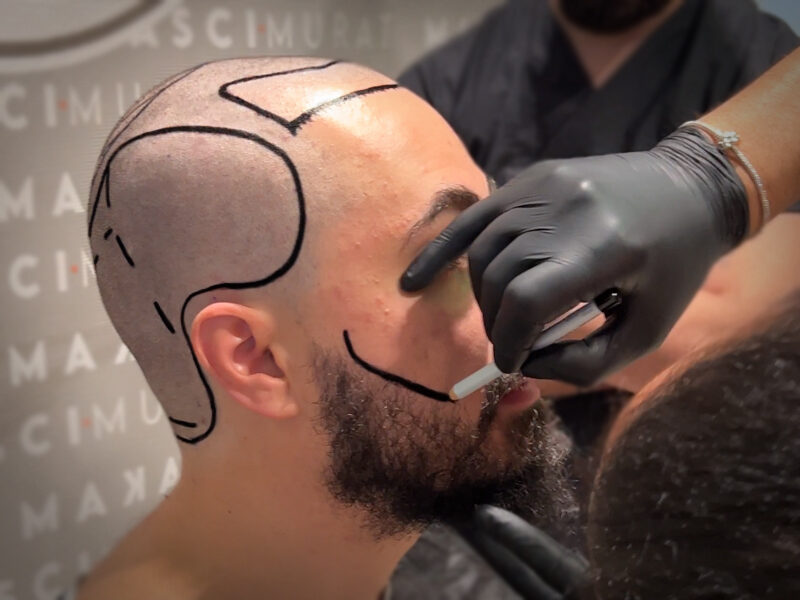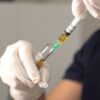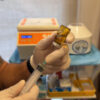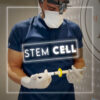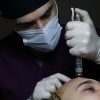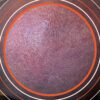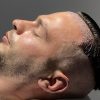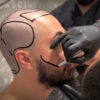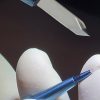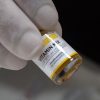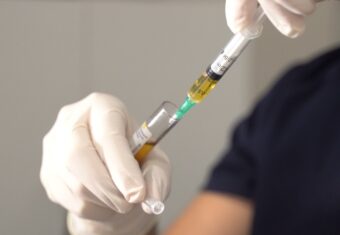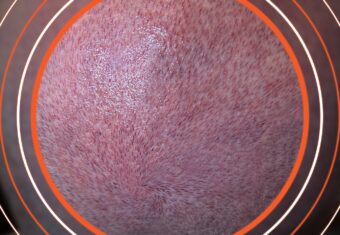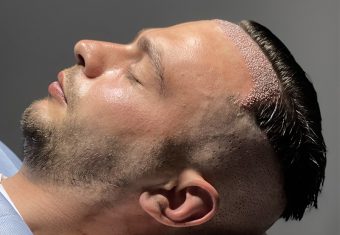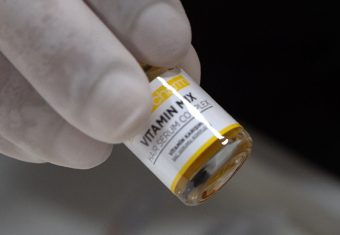Contents
What is a Beard Transplantation?
Beard transplantation is a form of treatment that has become as popular as hair transplantation in recent years. As we know the beard is an essential accessorie for men.The beard can get effected by external factors or problems accured because of genetics. Since these problems create psychological pressures on people, they create a source for other problems in work, family or social life.
Because the beard is a profile essential and has an influence on our appearance,yhr problems that may ocur can effect lives in a negative way.
A beard tranplant offers definitive solutions for people who have local gaps and spaces. After a 7-8 hour operation, the person can easily have dense and bushy beards in natural appearance.
How is the Beard Transplantation Performed?
The procedure is very similar to hair transplantation. Hair follicles taken from the nape of the neck, called the donor area, are transferred to the needed areas within the planning to be done.
At the beginning of the issues to be considered is that the form of hair and beard is different. Although beards and hair are similar in structure, they are not exactly the same form. For this reason, the donor area should be well analyzed and the hair follicles to be transferred should be well selected in the planning for beard transplants. Otherwise, an unnatural appearance may be encountered.
In hair transplantation, during the collection of grafts from the donor area, the strongest roots are tried to be selected in order to obtain a dense appearance in the transplantation area. This situation is slightly different in beard transplantation. If the graft selection in the donor area is not done well and the hair follicles stronger than the beard structure are transferred, an undesirable, unnatural appearance will emerge. For this reason, grafts that will provide the best fit for the face should be collected during the extraction process while selecting the root.
Although beards are harder than hair follicles, they are usually in a single form. Also, they are not in group form as in hair. For this reason, the hair follicles taken from the donor area should be selected from single hair follicles as much as possible, if the donor area does not allow this, the hair follicles should be turned into a beard form after a series of processes.
The hair follicles, which are returned to their beard form before the transfer, provide the best harmony with the facial tissue. Graft tissue union is fully realized. If an effective plan is made during the planning phase where the beard directions and frequency are determined, the person can have beards that are indistinguishable from natural beards with beard transplantation.
Another point to note is that the hair and beard shedding procedure is different. While the hair may show shedding or weakening over time due to genetic or an external factor, there is no such change in the beard. For this reason, the beard condition should be analyzed well before the beard transplant operation and the beard density should be adjusted well during the canal opening. In a wrong planning to be made, while there is a more frequent image in some places, a less frequent image may occur in some places. In this case, the natural image will still be negatively affected and will continue to disturb the person constantly.
It should also be taken into account that the person’s beard usage style may change over time. This parameter should be evaluated while giving the channel frequency and directions, and it should be possible for the person to use her beard long or short.
To Whom Is a Beard Transplantation Applied to?
If there is no health problem that prevents the person from undergoing the operation, beard transplantation can be applied to anyone who has a problem in the beard area due to a congenital or later external factor (stress, used cosmetics, scarring after an accident).
Before the application, it should be checked whether the person has a problem that will prevent the operation. If there is no problem at this point, the condition of the beards can be evaluated.
Beard problem may develop due to congenital or genetic reasons. In such cases, people may think that a beard transplant operation will be unsuccessful and ineffective because there is no congenital beard growth in the problem area, but this is a wrong thought. With the beard transplant operation to be performed on an area without a congenital beard, this problem can be easily avoided. Not having a beard caused by birth or genetic reasons is not an obstacle to have the operation.
If the beard problem has occurred as a side effect of heavy cosmetic use, excessive stress or another treatment, the situation should be evaluated. First, the source of the problem is determined, a treatment plan is made if necessary, an operation can be performed after the problem is solved and the pressure applied to the beard is removed.
If the person has a beard problem due to scar tissue caused by a previous accident, she can easily choose beard transplant operation in this case. Since the structure in the scar tissue will be different from the normal tissue, it may be necessary to use a supportive treatment after the operation. With supportive treatments, the nutritional quality is maximized and the nutritional problem caused by the scar tissue can be minimized. No matter how much it is supported, it should be noted that the success rate is limited in planning on this type of scar tissue.
What are the Beard Transplantation Methods?
Beard transplantation methods are similar to hair transplantation methods.
At the stage of collecting the grafts to be transferred; While FUE (Follicular unit extraction) technique is used, sapphire transplant or DHI choi-pen technique is used in the transfer part. Although the technique to be used is similar, the planning should be completely different. The grafts to be selected during the collection phase of the grafts made with the FUE (Follicular unit extraction) technique should be chosen from the ones closest to the beard roots in terms of structure. If there are regional gaps or sparseness in the beard part of the person, it becomes even more important to choose the hair follicles to be selected from the ones closest to the beard roots. Because roots in different forms will cause two different appearances. This continues to negatively affect the appearance of the person.
Facial tissue is softer due to its structure. For this reason, it does not provide much opportunity for revision processes. Soft facial tissue will be irritated during revision procedures. For this reason, the analysis should be done well before the beard operation and should not be rushed.
In the transfer part, there are two different techniques that can be used. These;
- Sapphire planting technique,
- DHI is the choi-pen technique.
The purpose of the two techniques is to transfer the collected grafts to the area where they are needed in the healthiest way. Which technique will be used for the transfer process is determined at the pre-operative analysis stage. Although;
- One technique is better than the other,
- It gives more natural results,
- Heal earlier,
- Although there are opinions that it allows for more frequent transfers, these discourses do not reflect the truth.
The choice of technique to be used is determined by the situation in the transfer area. Although it varies according to the situation, a natural and bushy beard appearance can be obtained with both techniques.
How Should Channels Be Opened in Beard Transplantation?
If the sapphire planting technique is used, the locations of the collected grafts are first prepared for placement. While steel blades were used for this process in the past, sapphire tips are used today. Sapphire material is one of the most compatible materials for human tissue. Since it is a durable material, it does not lose its form. Therefore, since the channels to be opened with sapphire tips will be smooth and identical to each other, a more natural appearance is obtained after the operation.
Another important issue during the opening of the channels is the channel directions. Channel directions should be given exactly the same as the person’s existing beard directions in order to gain a natural appearance. In the future, the person may want to use their beard long or short. While the channel directions do not bother the person much in long uses, if the original directions are not calculated in short uses, it can disturb the person quite a lot. This is also an undesirable situation.
Things to Consider After Beard Transplantation
The post-operative procedure is similar to hair transplantation and beard transplantation. The difference is that the facial tissue is softer than the hairy tissue. In addition, while the hairy tissue does not move, the beard area is a moving area. The roots transferred within 10 days after the operation experience a complete union. During this time, care should be taken while eating, drinking, or talking until the union is complete. It should be fed with liquid or soft foods as much as possible. Roots on the movable area may be damaged or dislodged in a reverse movement.
In general, the things to be considered after beard transplantation can be summarized as follows;
- The doctor who performed the operation should be in contact with and her recommendations should be followed.
- Photo sharing should be done daily.
- If there is smoking, it should be reduced, if possible, it should be stopped completely.
- Alcohol consumption should be avoided for 10 days.
- Drinks that dilute the blood, such as coffee and green tea, should not be consumed for the first 3 days.
- The planting area should be protected for 10 days against rubbing and impacts.
- It should be moved very slowly during washing.
- Supine sleeping position should be preferred for 10 days.
Can beard transplantation be done in cases such as burn scars?
Beard transplantation can be preferred for beard problem after burns. Before the operation, the scar tissue caused by the burn should be analyzed. If the tissue condition is suitable, beard transplant operation can be planned. It should be noted that the result cannot be guaranteed since the tissue structure will completely change after the burn.
Is a Beard Transplantation Performed Together with a Hair Transplantation?
The application of hair transplantation and beard transplantation together is one of the favorite applications of recent years. Individuals who have problems in the hair and beard part can easily combine the two operations. Since the application and post-operative period are similar in both operations, the person can go through this process comfortably.
The donor profile must be usable for the two operations to be performed together. Since the need for high numbers of grafts will arise, if the person does not have enough donor reserves, the two operations should not be combined, but should be divided into sessions. Whichever area bothers the person the most, a study can be done for the other area after the donor area is recovered (average 1 year).
If there is enough donor area;
Reception is done using the FUE technique, as in single-zone studies. Since some of the collected roots will be used in the hair and some in the beard area, two separate ends should be used. While trying to get more grafts to be used for hair, the grafts to be used for beard should be selected from thinner and single roots. Since grafts of different strengths and sizes will be taken, at least two separate apparatus should be used during the extraction. After the extraction process, the hair follicles to be used for hair and beard are separated. According to the planting technique determined in the planning section after the separation process;
If the sapphire planting method is selected, the channels are opened and the planting process is started.
If the DHI choi-pen technique is selected, the appropriate tips are attached to the choi-pen implanters to be used and the direct sowing process is started.
There is no need for two separate applications after the operation. The procedure continues together for hair and beard transplantation.
Beard Transplant Prices 2022
The price of a beard transplant can change according to the area,the date and the packet that has been offered and many other situations. You can get information about current beard transplant prices here.
Comments of Those Who Have Beard Mustache Transplantation

